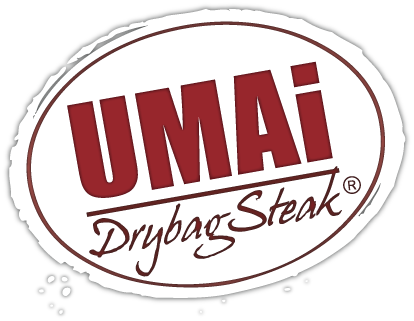The Original Dry Bag Steak | Make Artisan Dry Age Steak at Home › Forums › Dry Aging Steak › Dry Aging Steak with UMAi Dry® › newbie seeks answer
- This topic has 2 replies, 2 voices, and was last updated 9 years, 6 months ago by
Tony Erne.
-
AuthorPosts
-
January 25, 2015 at 9:53 am #2193
PhillipK
MemberI am new to this dry aging thing. I saw some videos on YouTube on how to do this incl reading a little on this. Besides buying the bags and getting the sealer for it. I have an older refrigerator which I am trying to get it to be constant at 31-34. Do I need a fan in there or not? I have seen some videos where drying was just putting it on a rack and with some sea salt below where the Ribeye (16-20lbs) sits on a wire sort of rack with a small fan blowing for circulation. If so then why use a bag when many are using just ranging from paper towels to nothing on it? Just curious. When dry aging with the umai bags do you need to put some form of seasoning (a little) on it? If so are there any videos on how to do this? Thanks
January 26, 2015 at 12:09 am #8876Jim
MemberPhillip, welcome to the forum
Those are some good questions. Dry aging of beef has been around for centuries and obviously it was done without UMAi Dry bags.
We can liken the function of UMAi Dry as sort of packaging – a protective layer.
If all the foods in a grocery store just sat on racks without any packaging or just in bins. The shopping experience would be entirely different, from the time you walk into a store and smell the decaying foods until the time you examine the food you bought and use it.
You can definitely dry age without the use of UMAi Dry bags, provided that you don’t mind the following:
1. A rather strong smell in the fridge being emitted by the aging meat that can permeate other foods that are nearby
2. A trim loss that is quite a bit higher due to oxidation permeating the meat deeper
3. Possible mold growing on the meat and migrating to other items in the fridge
4. The taste and smell of the meat that depends on what else was in close proximity to it.
As for the use of a fan, it’s use is much more important if you were to dry age in open air, rather than in UMAi Dry. We found no need for a fan when dry aging in UMAi Dry. The salt in the open air method acts as a desiccant removing the moisture from the air, the fan circulates the air around the meat to keep the surface dry in order to prevent nasty things from starting to grow on the surface.January 26, 2015 at 2:06 pm #8878Tony Erne
MemberI have used both dry aged bags and no bags. I started with the dry bags and moved to no bags just to see the difference. I have used Salt but want a higher moisture level so salt the last 4-5 times day aging.
I have gone back to bags for several reason. I get a nuttier smell and flavor profile using the UMAi dry age bags vs. open air no bags. However, I still do both.
The bag does in fact protect the meat from getting foreign stuff on it but the over all protection comes from the 1/8 dried meat or bark on outer meat area.
I currently have a rib eye primal (prime) (19lbs) in a dry bag. I also have one primal rib eye (choice) with bone-in (no bag on this primal, the bones poke holes in my UMAi bags).
I use a small RV fan in my Fridg to keep the cold air moving by moving the air flow it keeps the temps stable. TEMPS are very important keep them 33-38 degs if they fluctuate up or down a deg or two for the short periods of time its ok, but continue to monitor the temps. I also use indoor-outdoor wireless temp gage. It gives me temp and moisture levels.
Side note; I use water filled milk cartoons to add bulk items to take up space in the Fridg, it helps with the temp fluctuation sable too.
The fans I use are RV fans http://tinyurl.com/kjgn3ab I use two one on each shelf and direct the air flow in the same direction.
-
AuthorPosts
- The forum ‘Dry Aging Steak with UMAi Dry®’ is closed to new topics and replies.
